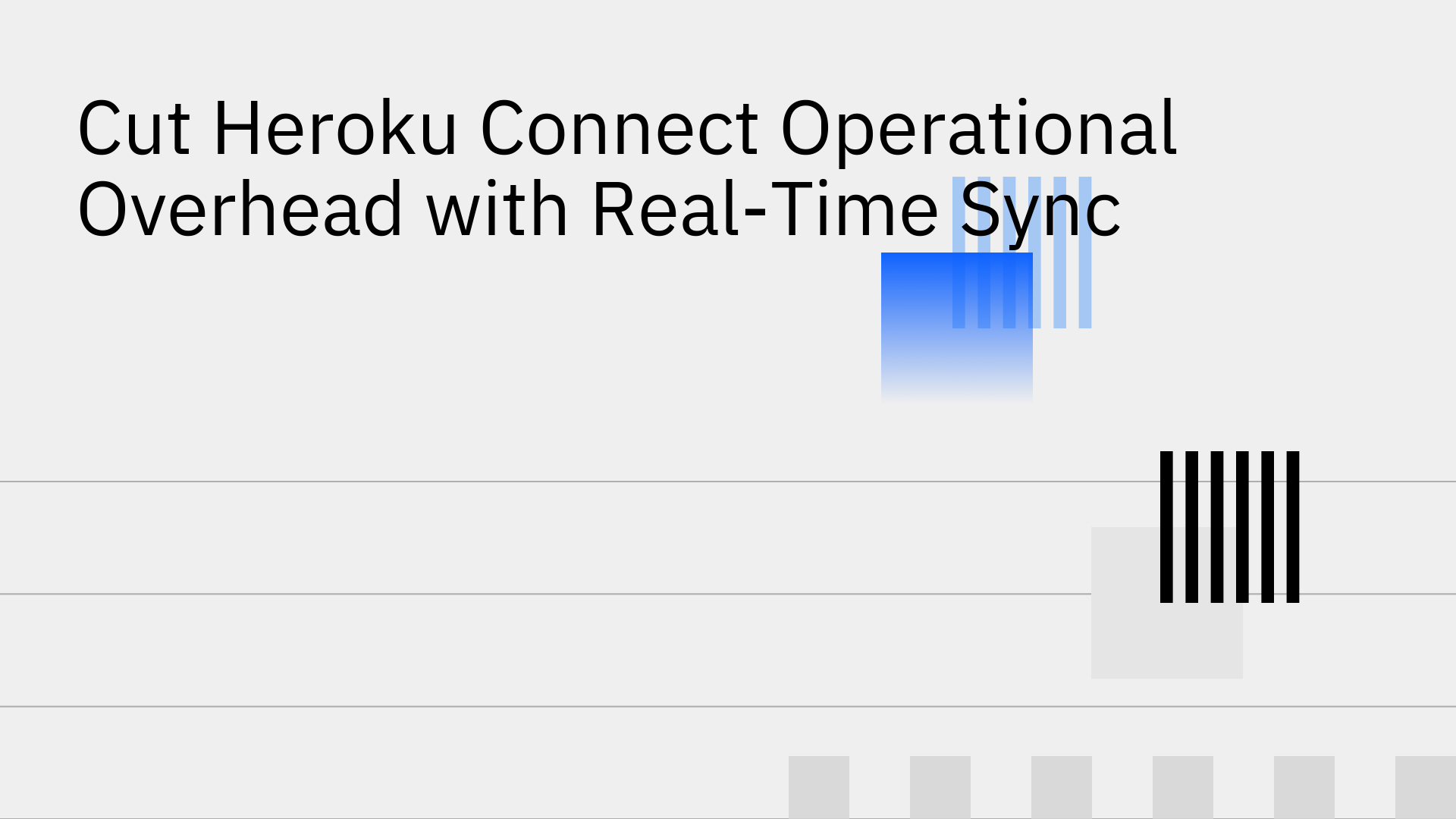While Heroku Connect offers a way to synchronize data between Salesforce and a Heroku Postgres database, it often introduces significant operational overhead. This overhead manifests as the time, effort, and resources spent managing sync issues, data latency, and scaling limitations.
For engineering teams, this means less time spent on innovation and more time on maintenance. A real-time, two-way sync solution can eliminate this burden, freeing your team to focus on core business logic. While there are several Heroku Connect alternatives, a purpose-built platform offers the most direct path to efficiency.
Understanding Heroku Connect's Operational Overhead
Operational overhead is the collection of hidden costs associated with maintaining the Heroku Connect service. These costs go beyond the subscription fee and directly impact your engineering team's capacity.
Key challenges include:
- Data Sync Delays: Heroku Connect polls for changes, often on a 10-minute interval. This is not real-time, which can lead to applications operating on stale data and cause inconsistencies across your systems.
- Constant Troubleshooting: Developers frequently spend hours diagnosing and resolving sync errors. Common issues include hitting Salesforce API limits or dealing with batch update errors that can halt synchronization [8].
- Complex Configuration: As data models evolve, setting up and managing object and field mappings becomes increasingly complex and time-consuming. This requires specialized knowledge and careful management to avoid data loss [7].
- Scaling and Cost Inefficiencies: As data volume grows, Heroku Connect's performance can degrade. Costs can also escalate unexpectedly due to a pricing model tied to row counts, which may not align with your business's growth [2].
The Business Impact of High Operational Overhead
The technical challenges of Heroku Connect translate into tangible business problems that affect productivity, data quality, and user satisfaction.
- Reduced Developer Productivity: Engineers get bogged down with "API plumbing" and data maintenance instead of building features that drive business growth. As businesses scale, the limitations of platforms like Heroku can hinder innovation and performance [4].
- Compromised Data Integrity: Data latency leads to inaccurate analytics, flawed reporting, and poor business decisions. When your operational data isn't current, every department from sales to finance is working with an incomplete picture.
- Poor User Experience: Customer-facing applications powered by stale data deliver a frustrating and inconsistent user experience. This can erode customer trust and lead to churn.
- Spiraling Costs: The combination of direct subscription fees and the indirect cost of developer time spent on maintenance adds up quickly. If your Heroku costs are draining your CTO budget, the operational overhead is a primary culprit.
The Solution: Real-Time, Bidirectional Sync with Stacksync
Stacksync is a modern alternative designed to eliminate the operational overhead associated with Heroku Connect. It replaces polling-based sync with an event-driven architecture that delivers performance, reliability, and scale.
Key differentiators include:
- Real-Time Speed: Data syncs in milliseconds, not minutes. This ensures your applications and teams always have the most current information, enabling real-time operational workflows.
- True Two-Way Sync: Changes made in either your database or Salesforce are propagated instantly and seamlessly. Stacksync manages dependencies and prevents conflicts, ensuring data consistency across systems.
- Proactive Issue Management: Instead of silent failures, Stacksync provides a dedicated dashboard to monitor, alert, and resolve sync issues with a single click. This turns hours of debugging into minutes of resolution.
- Smart API Rate Limits: The system automatically adapts to traffic to prevent hitting API quotas. It intelligently batches requests and respects API availability, a common pain point with Heroku Connect.
- Designed for Scale: You can confidently sync millions of records without managing infrastructure or worrying about performance degradation. For companies looking to replace Heroku Connect, an affordable real-time sync that scales is a critical advantage.
How to Replace Heroku Connect and Reduce Overhead
Switching from Heroku Connect to Stacksync is a direct path to reducing overhead and improving system reliability. The differences in architecture and functionality are clear.
| Category |
Heroku Connect |
Stacksync |
| Sync Speed |
10-minute polling (batch) |
Milliseconds (real-time) |
| Error Handling |
Manual debugging; potential silent failures |
Automated alerts and one-click issue resolution |
| API Management |
Requires manual monitoring |
Smart, adaptive rate limits |
| Directionality |
One-way or limited two-way |
True bidirectional sync |
| Scalability |
Performance can degrade; costs increase |
Built for high-volume with predictable cost |
Key Takeaways
Heroku Connect depends on batch polling, which slows down data freshness and increases the risk of silent sync failures as workloads scale.
Stacksync delivers real-time sync with automated error resolution, adaptive API protection, and reliable bidirectional flows between systems.
For teams managing large datasets or complex integrations, Stacksync ensures stable performance and predictable costs even at enterprise scale.
Switching to Stacksync is not just a technical upgrade but a strategic move to reclaim valuable developer time and reduce your total cost of ownership (TCO). A Heroku Connect post-mortem of past sync challenges can reveal the true cost of its operational limitations and build the case for a more robust, modern solution.
Conclusion: Shift Focus from Maintenance to Innovation
Heroku Connect's operational overhead is a hidden tax on your engineering team's productivity and your company's budget. The constant need for troubleshooting, manual configuration, and performance management diverts focus from what truly matters: building competitive products.
Real-time sync platforms like Stacksync eliminate these challenges by providing a scalable, resilient, and automated data synchronization solution. By abstracting away the complexity of API plumbing, Stacksync frees your team from tedious maintenance and empowers them to innovate.
Ready to see the difference? Book a demo with one of our cloud architects or start a free trial today.
